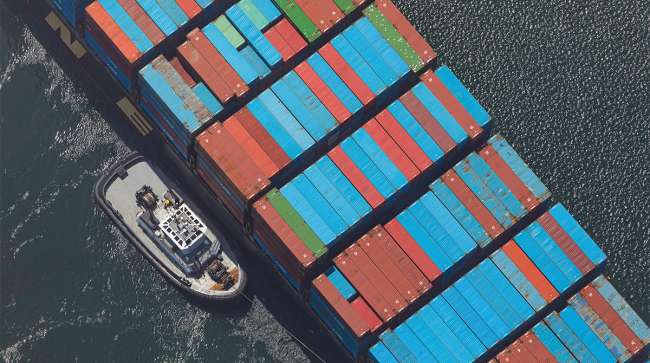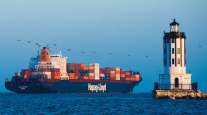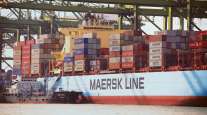WTO Predicts 3% Rise in Merchandise Trade in 2025

[Stay on top of transportation news: Get TTNews in your inbox.]
Global goods trade in 2025 will grow less then initially forecast, the World Trade Organization said, as rising instability weighs on economic activity and threatens to disrupt shipping.
The volume of total merchandise trade will rise by 3% next year, less than the 3.3% growth seen five months ago. The expansion for this year has been revised slightly up to 2.7%. The forecasts are in line with the WTO’s prediction that global gross domestic product will expand by 2.7% in both years.
Russia’s war in Ukraine and Israel’s stepped-up fighting in Gaza and Lebanon threaten to further destabilize a global economy where many central banks, having brought inflation down, have started cutting interest rates to avoid deeper slowdowns.
“Risks to the forecast are firmly on the downside due to regional conflicts, geopolitical tensions and policy uncertainty,” according to the report released Oct. 10 by the Geneva-based organization. “An escalation of the conflict in the Middle East could further disrupt shipping and raise energy prices given the region’s importance in petroleum production.”
BREAKING: Global goods trade is on track for gradual recovery despite lingering downside risks according to the updated forecast from WTO economists. Now online: https://t.co/feBUWDCfym #GlobalTradeOutlook pic.twitter.com/V9wonk0tzT — WTO (@wto) October 10, 2024
That language reflects a worsening assessment of the outlook for international commerce. In April, the WTO had said that “risks to the forecast are on the downside.”
Among the other threats to the forecast is a “fragmentation of supply chains linked to geopolitical considerations.” Still there is “some limited upside potential if interest rate cuts in advanced economies have a larger-than-expected positive impact on growth without reigniting inflation,” the WTO said.
Trade that once flowed between China and the U.S. is going through so-called connector countries, and the WTO looks at Vietnam and Mexico in its latest analysis to illustrate this, Ralph Ossa, the WTO’s chief economist, said during a press briefing. “You get the sense that some of the trade that used to flow bilaterally is taking a bit of a longer route, so that’s clearly a shift that we’re seeing,” he said.
McLeod Software CEO Tom McLeod explores the potential for artificial intelligence to boost efficiency and build resilience. Tune in above or by going to RoadSigns.ttnews.com.
The report also highlighted different speeds of trade growth depending on the sector and geographic location.
During the first half of 2024, the value of world merchandise trade gained only 0.1%, the WTO said, while trade in commercial services from January through March — the most recent quarter for which data are available — jumped 8% from a year earlier. Preliminary figures suggest “that relatively strong growth is likely to be sustained in the second quarter as well.”
Fueling the growth in services trade is a digital transformation that “has dramatically increased the potential of some services to be traded across borders,” the WTO said. Digitally delivered services amounted to more than 54% of total services exports, and almost 14% of all exports of goods and services in 2023, it said.
Regional disparities exist, too, with “the most conspicuous weak points in the global economy” being Germany and Argentina, the WTO said. Purchasing manager surveys in other countries including the U.S. “have also signaled weakness in manufacturing, whereas service sectors appear to be holding up better.”
Asia’s exports will grow faster than those of any other region this year, rising by as much as 7.4%, followed by the Middle East’s 4.7% growth and South America’s 4.6% gain. Meanwhile, shipments abroad from North America are expected to increase 2.1% while and Europe’s exports are forecast to fall 1.4%.
The fastest growing region for imports will be the Middle East, with a 9% improvement followed by South America’s 5.6% rise, the WTO said.
Want more news? Listen to today's daily briefing above or go here for more info
Still, the outlook for trade could change depending on the lengths to which countries go to protect industries with tariffs and export controls. A Bloomberg Economics analysis showed how the outlook for global trade would change if Donald Trump returns to the White House.
Ossa said that while the WTO hasn’t itself assessed the impact of Trump’s threat of across-the-board increase of tariffs on U.S. imports, he said trade policies that generally inject uncertainty into the outlook are harmful to the global economy.
“That’s one of the main benefits of the World Trade Organization,” he said. “What a system like this provides is not just low tariffs, but also predictable tariffs, so anything that undermines the certainty is of course detrimental to international trade.”





